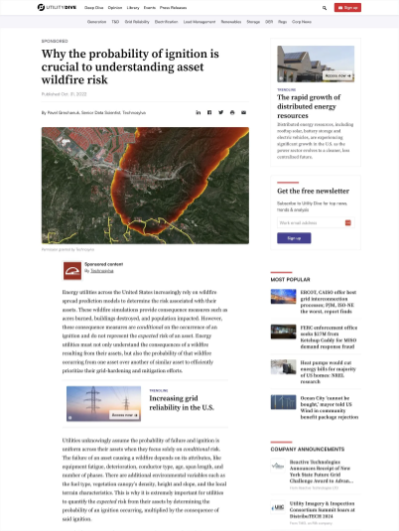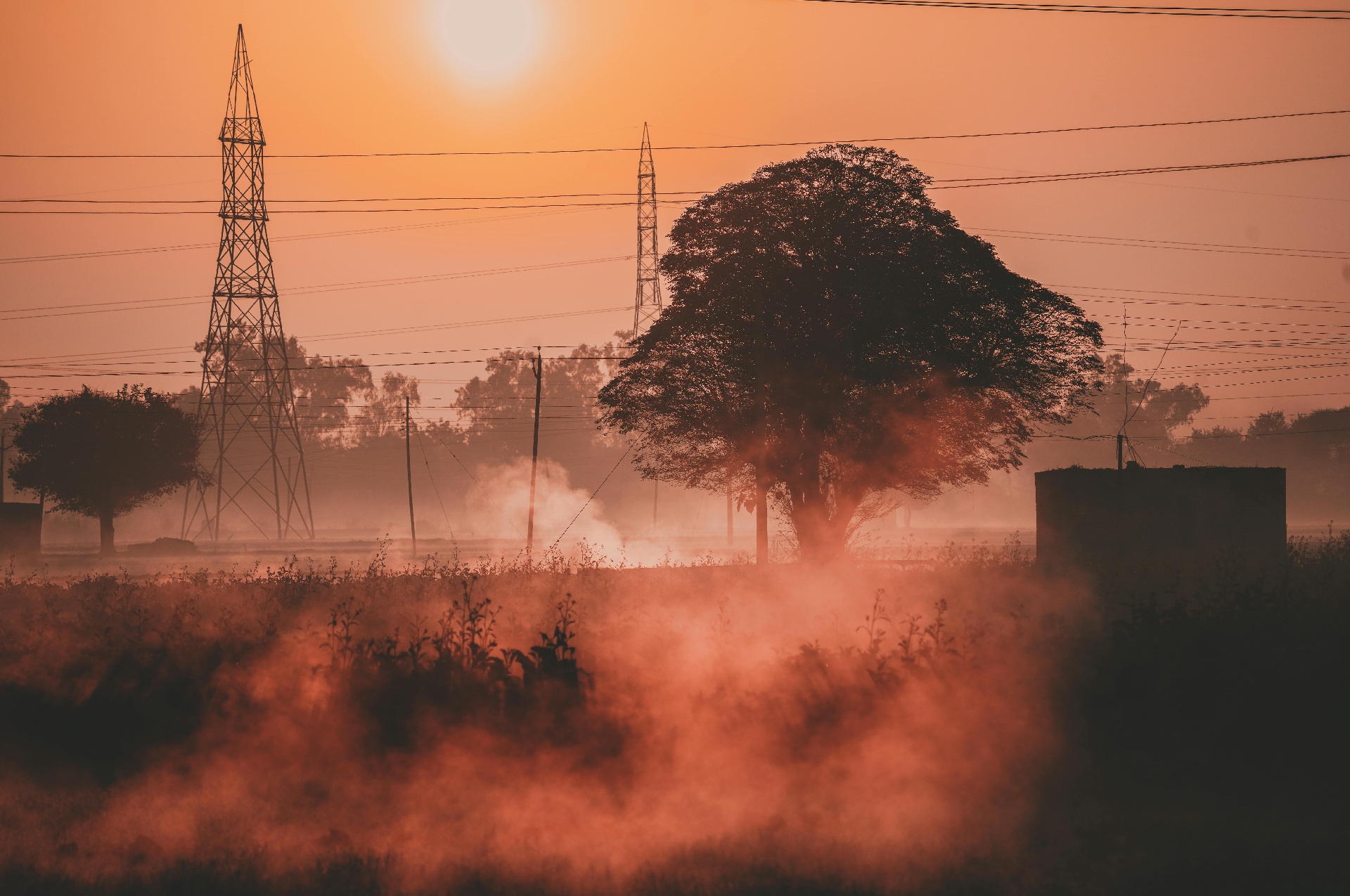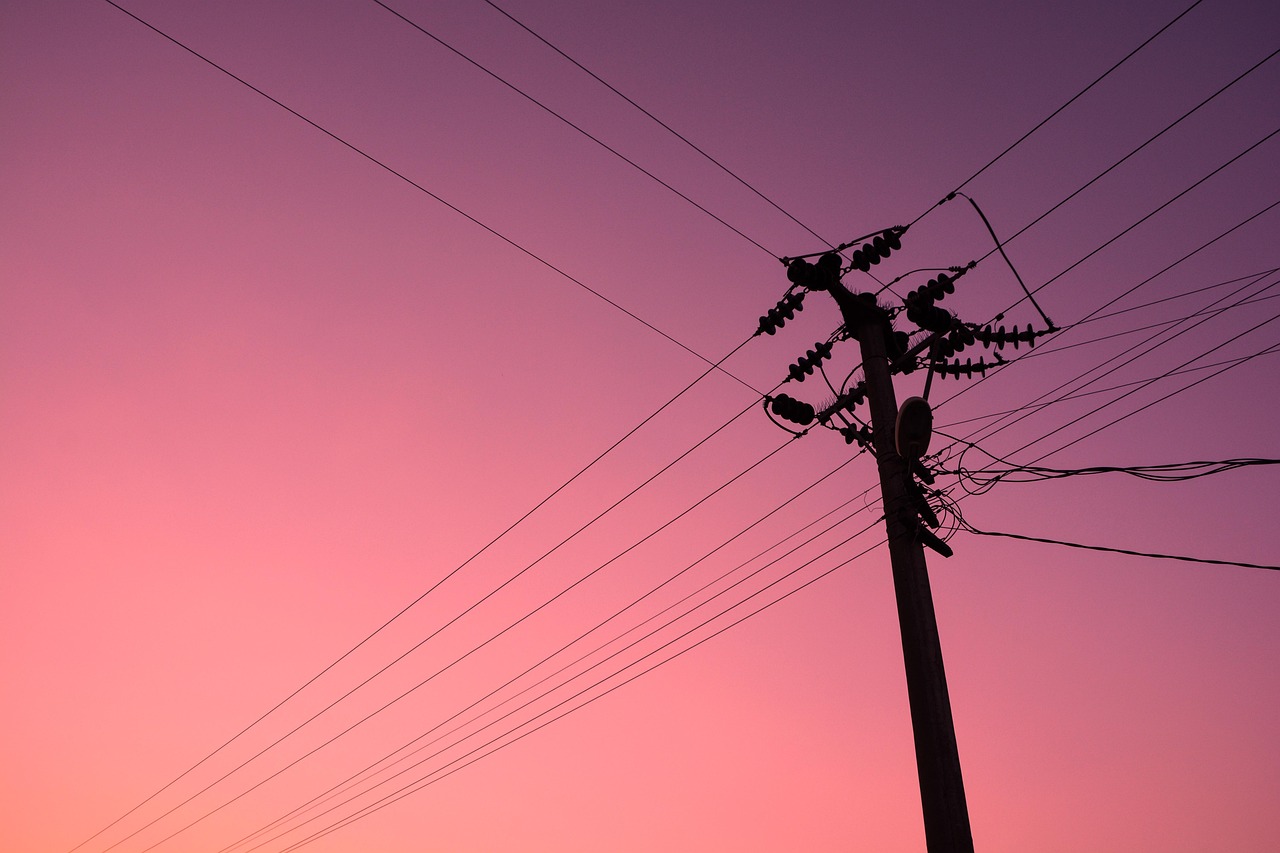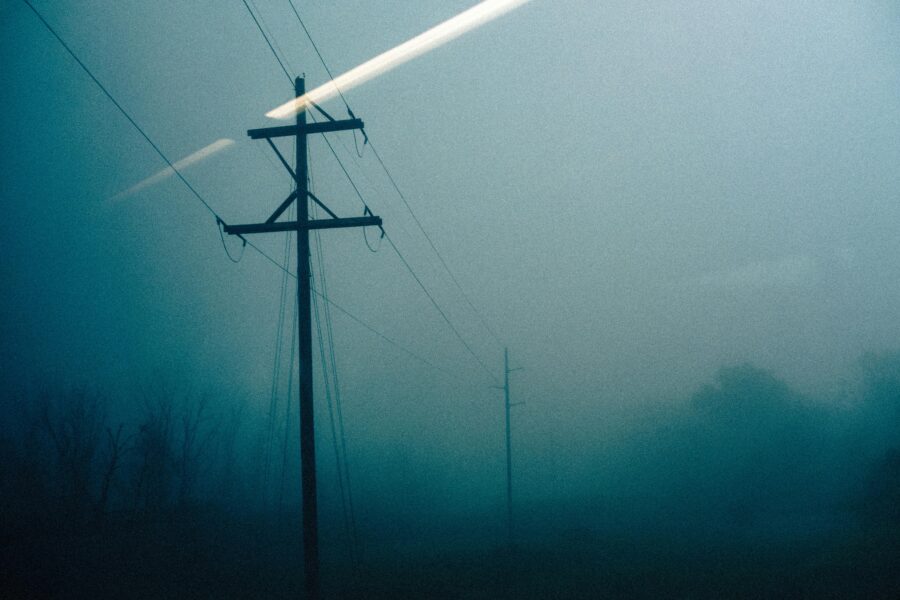Article
Why the probability of ignition is crucial to understanding asset wildfire risk
Energy companies in the United States are increasingly relying on wildfire spread prediction models to assess asset-caused ignition risk. Yet, these models are conditional on the occurrence of an ignition and do not represent the expected risk of an asset. Knowing the possibility of wildfire risk conditions in your service area is important-making comes from knowing the probability that one of your assets could start a wildfire.
Here, fire spread simulations must consider the potential consequences of a wildfire, while addressing the probability of ignition and failure based on various asset attributes and environmental factors. By understanding the expected risk from their assets, utilities can efficiently prioritize grid-hardening and mitigation efforts, making the best use of their limited budget resources to minimize the impact of wildfires on the communities they serve and the environment.
“It is crucial for utilities to continuously assess and update their wildfire risk assessments to stay ahead of changing conditions and ensure the most effective risk management strategies are in place.“

Technosylva’s Senior Data Scientist, Pavel Grechanuk, explained in a Utility Dive article that understanding expected risk is important in operations and for short and long-term grid-hardening efforts. If the focus is primarily on wildfire consequences, it may lead to resource allocation to assets having a low expected risk due to past asset hardening projects. He explained that it is important to consider the resilience of the asset when prioritizing risk as the law of diminishing returns shows that each incremental investment after a certain threshold will yield a diminishing reduction in risk.
Typically, asset hardening decisions are prioritized through a risk spend efficiency (RSE) analysis, in which the asset risk reduction is divided by the cost of the mitigation. If the RSE analysis is based primarily on conditional risk, the asset hardening will tend to sway towards areas with the most extreme wildfire behavior. Hardening these high wildfire consequence circuits does make sense, but you likely cannot guarantee the mitigation efforts are the most efficient at reducing the overall risk across all assets per dollar invested
It is crucial for utilities to continuously assess and update their wildfire risk assessments to stay ahead of changing conditions and ensure the most effective risk management strategies are in place. Just knowing your service area’s wildfire risk isn’t enough anymore. Electric companies must invest in advanced wildfire spread prediction technologies and integrate them into their risk management strategies for a safer and more resilient energy system. The future of energy utility operations depends on proactive and data-driven approaches to mitigate the risks posed by wildfires, ensuring safety and reliability for all stakeholders involved.
Learn how you can predict, mitigate, and prevent your evolving wildfire risk and additionally, how Technosylva solutions provide leading electric utilities with increased risk management, operations, asset mitigation, emergency planning, regulatory compliance, and improved public safety.
You can read the full article on Utility Dive here.


